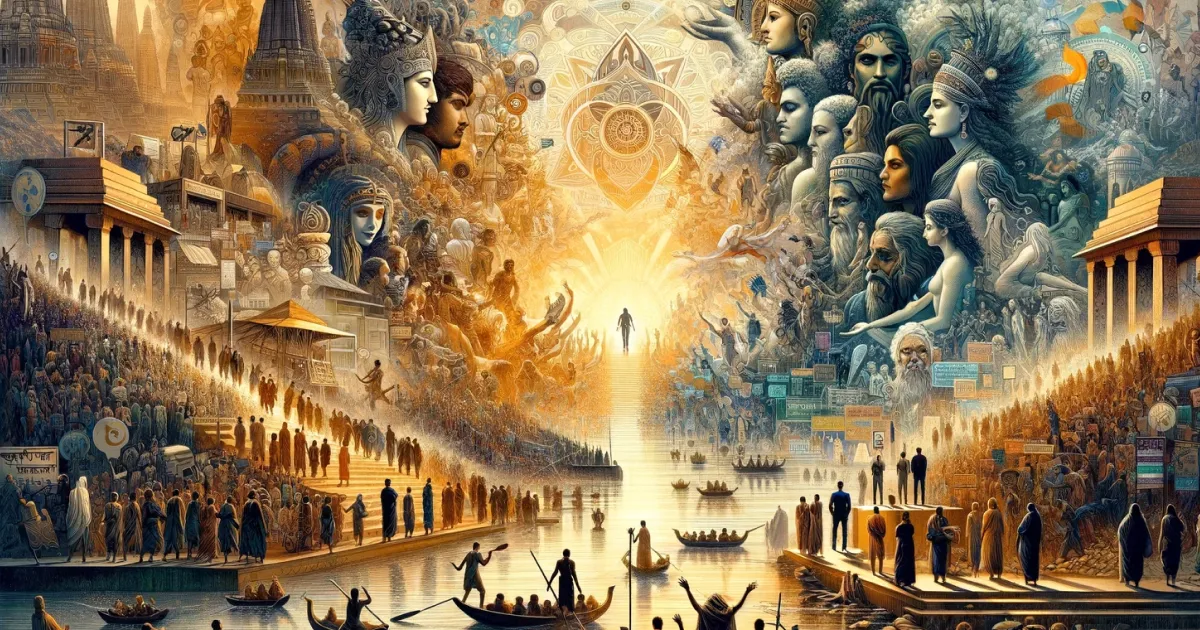What is a civilizational moment? How rare or regular are such moments? How must we respond to them?
Reaching deep into the past, let us first think of civilizational moments best available to us now as ‘mythology.’ When the sincere devotion of a seemingly disobedient son necessitated ‘descent,’ avataraṇa, of a Narasiṃha- was this a civilizational moment? When ancient Indians that had warred for generations put weapons aside and churned the ocean together- moment again? When a ruler that became unbearable was cast aside by the populace, and the son that succeeded him yoked the earth for material gains such that before him there were no towns and cities, but after him came grain, markets and civilization- surely the kind of moment we mean?
Or when, in the thick of ancient India’s most terrible war, both sides put weapons temporarily aside to grieve the loss of a common elder- Bhīṣma- could that qualify as a defining moment? If not, what of the ‘compiler-born-on-the-island’ who lamented- ”from dharma spring artha and kāma, why is dharma not practiced then?” and went on to compile Veda, Jaya and Purāṇa? Does he represent the hero that a civilizational moment needs?
Each of these cases evidences what we parse as the anatomy of a civilizational moment.
1- The Convergence of Attention, or Yearning, or Both
That is, the crest of desire to manifest. The descent of Viṣṇu as Narasiṃha emerged through the crest of Prahlāda’s devotion, as did the Samudra Manthana at the crest of war-weariness and the yearning of resolution among Daityas and Ādityas. Closer in time to us- at the stroke of a midnight hour- the culmination of a yearning for agency. And representative of such in the modern era- when the Prime Minister of a civilization-state submerged himself in the Gaṅgā at the Eternal City, Kāśī.
A civilizational moment is one where all eyes are turned to one thing, one pivot, one definitive convergence that carries within it a long-running yearning. At Bṛhat there is no doubt about this- we are in the midst of such a moment, and a civilization-state’s yearning is rearing to manifest.
2 - The Emergence of Hero, or Pivot, or Both
Avataraṇa of Narasiṃha, churning of amṛta, birth of Pṛthu, death of Bhīṣma, return of Ram Lalla to the place of his birth; or even the lowering of India’s flag at the Red Fort on Republic Day- these represent hero or pivot moments. They are the events which freeze time in collective memory, transcending its arrow and becoming a felt-experience the mind carries with it.
Convergence and emergence- with these a civilizational moment becomes primed. Priming is the creation of runway, a road that can now be taken to create a betterment of time- the increase of dharma over adharma. This acts as a whirlpool of acceleration- tributary moments swirl into the hero/pivot, an opportunity for civilizationary level-up.
3 - Dissipation, or Perpetuation. But Not Both
But acceleration is not guaranteed, just as the warriors of Kurukṣetra picked up arms again and battled till the 18th day- when neither side could claim to have upheld dharma. Just as civilization fell once again after the Samudra Manthana, requiring a Vasiṣṭha of a later era to create moment anew.
From culture springs reason, and through civilization does culture perpetuate. But civilizational moments are rare, and they require scaling, transformation, leadership and institution. They require the establishment of Agni and the commencement of Yajña. And the yajña needs Bhāratas- those who bear and carry forward.
It is this bearing, bharaṇa, that builds replication and self-perpetuation.
It is such bhāratīyas that convert moment to epoch.
It is such epoch that Bṛhat aims to create.
From idea to form, from intent to manifestation,
Bridging the gap between yearning and realization, Bṛhat is your perpetuating agent.
